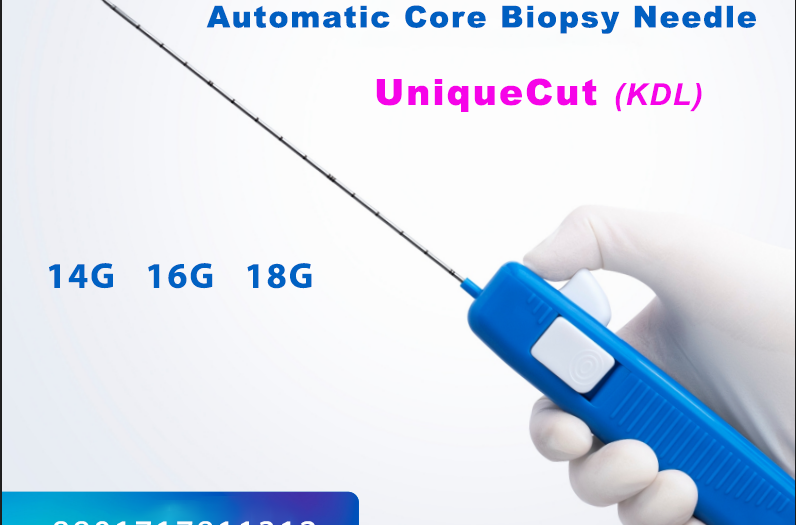Biopsy Needle – Everything You Need to Know
Biopsy needle is a crucial medical device used in the diagnosis of various diseases, especially cancer. As medical technology advances, the need for precise, safe, and efficient biopsy tools has grown significantly. Whether it’s for diagnosing breast lumps, liver issues, or other internal abnormalities, biopsy needles play an essential role in modern healthcare.
In this comprehensive article, we will explore everything about biopsy needles, including types, uses, procedures, top brands, and where to buy biopsy needles in Bangladesh.
🔬 What is a Biopsy Needle?
A biopsy needle is a specialized tool used by medical professionals to extract tissue samples from the body for diagnostic examination. These samples are then analyzed under a microscope to detect conditions like cancer, infections, or inflammatory diseases.
The biopsy procedure using a needle is minimally invasive and offers a safer alternative to surgical methods. It provides accurate diagnostic information with fewer complications, faster recovery time, and lower cost.
🧪 Types of Biopsy Needles
There are several types of biopsy needles designed for specific procedures. The main types include:
1. Fine Needle Aspiration (FNA) Needle
- Thin, small-gauge needle (22G–25G)
- Used for superficial masses (e.g., thyroid, breast, lymph nodes)
- Ideal for cytology (cell analysis)
2. Core Biopsy Needle
- Thicker than FNA needles (14G–18G)
- Extracts a tissue "core" for histological examination
- Common in breast, liver, prostate, and kidney biopsies
3. Vacuum-Assisted Biopsy Needle
- Uses suction to obtain larger samples
- Often used in breast cancer diagnosis
- Minimizes the need for repeat biopsies
4. Semi-Automatic and Fully Automatic Biopsy Needles
- Spring-loaded or trigger-activated
- Offers high precision and speed
- Common in ultrasound-guided or CT-guided biopsies
🏥 Common Uses of Biopsy Needles
Biopsy needles are used in diagnosing a wide variety of health conditions. Some of the most common applications include:
- Breast biopsy – to detect benign or malignant lumps
- Liver biopsy – for conditions like hepatitis, cirrhosis
- Lung biopsy – to assess nodules or tumors
- Prostate biopsy – to evaluate enlarged or abnormal prostate
- Kidney biopsy – to understand kidney damage or diseases
- Soft tissue biopsy – for muscles or subcutaneous masses
✅ Key Features to Look for in a Quality Biopsy Needle
When selecting a biopsy needle, healthcare professionals should consider the following features:
- Sharp stainless steel cannula for smooth penetration
- Echo-enhanced tip for ultrasound visibility
- Ergonomic handle for easy grip and control
- Automatic or semi-automatic triggering system
- Sterile and single-use for infection control
- CE, ISO, or USFDA certification for international safety standards
🌍 Best Biopsy Needle Brands in Bangladesh
In Bangladesh, several international and local suppliers offer premium-quality biopsy needles. Some of the most reliable brands and products include:
⭐ UniqueCut Core Biopsy Needle (KDL)
- Semi-automatic system
- Consistent sample collection
- CE and ISO certified
- Popular in radiology and oncology departments
- Distributed exclusively by Unique Medi Trade 01717811312
🛒 Where to Buy Biopsy Needles in Bangladesh?
If you're looking for biopsy needle suppliers in Bangladesh, it’s essential to choose trusted distributors that offer quality assurance, fast delivery, and after-sales service. One of the most reliable sources is:
🔹 Unique Medi Trade – Medical Equipment Supplier
- Exclusive distributor of UniqueCut (KDL) Core Biopsy Needle
- Supplies across Dhaka, Chattogram, Rajshahi, Khulna, Barishal, Rangpur, Cumilla, Bogura, Satkhira, and more
- Offers product training, warranty, and biomedical engineer support
- Official website: www.uniquemeditrade.com
🔧 Biopsy Needle Procedure: How Does it Work?
Here is a brief overview of how a biopsy using a core needle typically works:
- Patient Preparation
The area is cleaned and numbed with local anesthesia. - Imaging Guidance
Ultrasound, CT, or MRI is used to guide the needle accurately. - Needle Insertion
A semi-automatic or automatic biopsy needle is inserted into the target tissue. - Sample Collection
A tissue core is retrieved using the needle mechanism. - Post-Procedure Care
The patient is monitored briefly for bleeding or complications.
The entire process usually takes less than 30 minutes and is performed as an outpatient procedure.
⚠️ Safety and Precautions
Biopsy needles are generally safe, but precautions must be taken:
- Always use sterile, single-use needles
- Properly dispose of sharps in approved containers
- Watch for signs of bleeding, infection, or allergic reaction
- Ensure accurate imaging guidance to avoid damage to adjacent tissues
🔍 Frequently Asked Questions (FAQs)
Q1: Is a biopsy needle painful?
A: Most patients feel only mild discomfort, as local anesthesia is used during the procedure.
Q2: How long does it take to get biopsy results?
A: Results are usually available within 2 to 5 days, depending on the lab.
Q3: Can I reuse a biopsy needle?
A: No. Biopsy needles are single-use to ensure safety and prevent infection.
Q4: What’s the difference between FNA and core biopsy?
A: FNA collects cells, while core biopsy collects a tissue sample for more accurate diagnosis.
🏁 Conclusion
A biopsy needle is a vital diagnostic tool in today’s medical world. Whether you're a hospital, diagnostic center, or a physician, choosing a reliable, safe, and high-quality biopsy needle ensures better patient outcomes. In Bangladesh, the UniqueCut Core Biopsy Needle stands out as one of the best options—combining international standards with local availability.
If you’re searching for where to buy biopsy needles in Bangladesh, look no further than Unique Medi Trade, your trusted partner for medical supplies.
📞 Contact for Orders & Inquiry:
Unique Medi Trade
🌐 Website: www.uniquemeditrade.com
📞 Phone: +8801717811312
📍 Available Nationwide
Biopsy needle, core biopsy needle, best biopsy needle in Bangladesh, UniqueCut biopsy needle, semi-automatic biopsy needle, where to buy biopsy needle, biopsy needle price in Bangladesh, Unique Medi Trade medical supplier, liver biopsy needle, breast biopsy device, KDL biopsy needle, medical equipment distributor Bangladesh


